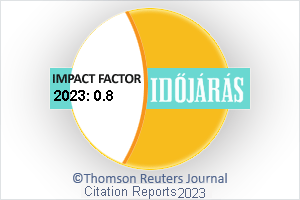Időjárás - Quarterly Journal of the Hungarian Meteorological Service (OMSZ)
Vol. 121, No. 2 * Pages 101–208 * April - June 2017
 |
|
 download [pdf: 2706 KB]
download [pdf: 2706 KB]
Spatial and temporal pattern of pollutants dispersed in the atmosphere from the Budapest Chemical Works industrial site
Ádám Leelőssy, István Lagzi, and Róbert Mészáros
idojaras.2017.2.1 (p. 101–)
Ádám Leelőssy, István Lagzi, and Róbert Mészáros
idojaras.2017.2.1 (p. 101–)
Short-term variations in air temperature in Krakow (Poland) as an indicator of climate change in Central Europe
Katarzyna Piotrowicz, Dominika Ciaranek, and Izabela Guzik
idojaras.2017.2.2 (p. 117–)
Katarzyna Piotrowicz, Dominika Ciaranek, and Izabela Guzik
idojaras.2017.2.2 (p. 117–)
Statistical correction of the wind energy forecast at the Hungarian Meteorological Service
Helga Tóth, Brigitta Brajnovits, and Balázs Renczes
idojaras.2017.2.3 (p. 137–)
Helga Tóth, Brigitta Brajnovits, and Balázs Renczes
idojaras.2017.2.3 (p. 137–)
Near-surface wind speed changes in the 21st century based on the results of ALADIN-Climate regional climate model
Tamás Illy
idojaras.2017.2.4 (p. 161–)
Tamás Illy
idojaras.2017.2.4 (p. 161–)
Verification of global radiation fluxes forecasted by numerical weather prediction model AROME for Hungary
Zoltán Tóth, Zoltán Nagy, and Balázs Szintai
idojaras.2017.2.5 (p. 189–)
Zoltán Tóth, Zoltán Nagy, and Balázs Szintai
idojaras.2017.2.5 (p. 189–)
IDŐJÁRÁS - Quarterly Journal

Az IDŐJÁRÁS a HungaroMet Nonprofit Zrt. negyedévenként megjelenő angol nyelvű folyóirata
Megrendelhető a journal.idojaras@met.hu címen.
A szerzőknek szánt útmutató itt olvasható.
Megrendelhető a journal.idojaras@met.hu címen.
A szerzőknek szánt útmutató itt olvasható.









